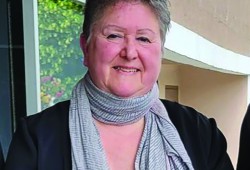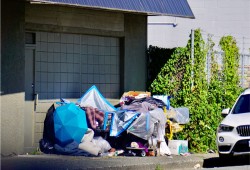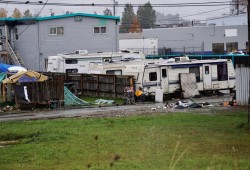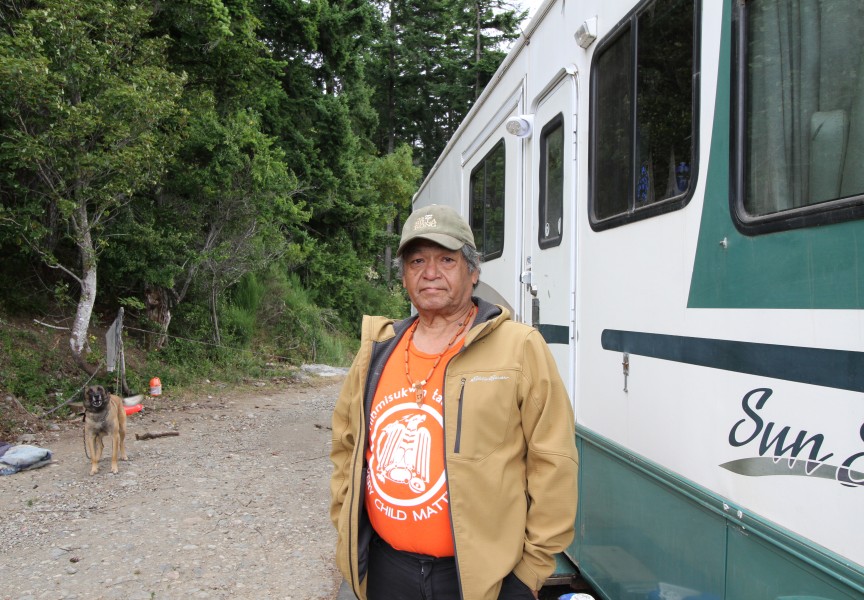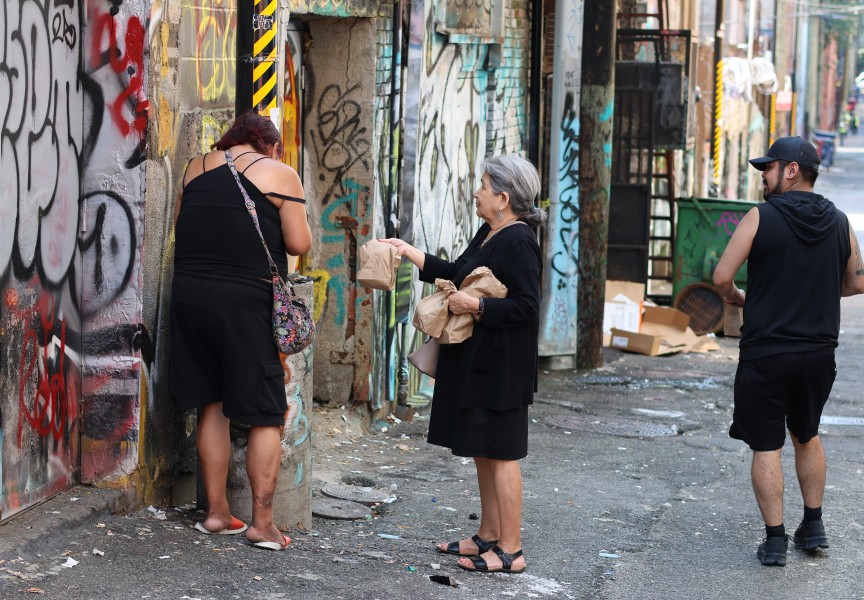With snow falling and temperatures hovering around 0 degrees Celsius, more than 100 walkers faced the cold to walk in the annual Coldest Night of the Year fundraising event on Feb. 25.
This year’s walk raised more than $43,000 for Port Alberni’s Sage Haven Society, which is 124 per cent of their goal.
Sage Haven ExecutiDECve Director Ellen Frood said they are thrilled to have surpassed their fundraising goal.
“The goal was $35,000 and we’re over $43,000 so that’s absolutely spectacular. We’re thrilled and so thankful to the community for coming out and all the walkers that came in not-so-great weather, and of course the sponsors,” Frood said, adding that funds from the event are used in two areas. “One for our transition house, which is our 30-day emergency shelter for women and kids, and the other is for our drop-in center on Third Avenue. So it’s all about bringing in people from the cold and that’s what we do.”
Sage Haven’s transition house is an emergency shelter for women and children fleeing intimate partner violence. Frood said in the last while the shelter has been at full capacity, but that hasn’t always been the case in the past.
Although the Sage Haven transition house isn’t necessarily for homeless individuals, Frood does hear from the homeless community through the drop-in centre. The theme she hears is that housing in the Alberni Valley is not affordable.
“As a general comment I think that we’re seeing probably greater homelessness because of the cost of rentals in the area and accessibility is almost impossible for somebody to rent,” Frood said. “We need to actually build affordable housing complexes, period.”
Frood said Sage Haven currently has a 22-bed second-stage housing project underway that will temporarily house women and children who meet the society’s mandate.
“In the fall of this year we’re going to be able to deliver another 22 apartments basically. It’s not permanent housing, but none the less it’s providing a solution there,” she said.
Frood added that the homelessness issue in the community and affordable housing needs to be dealt with immediately and not years down the road.
“It’s about now and I think that’s the thing that’s so frustrating for those trying to help people,” she said. “Housing is a basic human right.”
There are several affordable housing projects currently in various stages in the Alberni Valley and surrounding areas for Nuu-chah-nulth. The Walyaqil Tiny Shelter Village on lower Fourth Avenue will soon provide homes for 30 individuals, helping with the town’s homelessness population. The former Cedarwood Elementary School near the Fall Fair grounds will become an affordable housing complex for Ahousaht members living in Port Alberni. Also, 19 affordable housing units are being built within the Huu-ay-aht First Nations’ and Uchucklesaht Tribe’s communities.
Ahousaht member Alice Sam spends much of her time patrolling the streets of Port Alberni providing assistance and resources to the homeless community. Both in her role as advocate for the Kuu-us Crisis Line Society and in her free time, Sam meets those in need where they are to help connect them with housing and basic living resources.
Sam said she hasn’t noticed homelessness has been any worse this winter that past winters, in fact support for those individuals has been improving. She gives props to those running the Eagles Hall on Third Avenue for people seeking a warm bed on a cold night.
The hall has become a temporary cold weather shelter until March 31, 2023 while the nearby Bread of Life Centre undergoes renovations for their new shelter.
Sam said she’s dropped people off at the hall a few times for shelter and that it’s looking nice.
“They’ve obviously thought out a good floor plan,” Sam said. “There’s showers that are going to be accessible.”
Being Nuu-chah-nulth herself, Sam said she tends to keep her own stats on Indigenous people amongst the homeless community. She said out of 33 people she’s tracked, 11 are from Ahousaht and about 80 per cent are Indigenous.
In the 2021 Port Alberni homeless count, 65 per cent of individuals identified as Indigenous, up from 48 per cent in 2018. That is compared to 17 per cent of the city’s general population who identify as Indigenous.
Sam said many of the Indigenous individuals are part of a couple and a lot of the time that’s why they don’t have shelter. Sam said there’s no shelter options for couples to stay together.
“They don’t want to be in different areas so that’s what I’ve been aware of,” she said.
Although Sam does often see members of the Quu’asa team and Kuu-Us helping those living on the streets, she says more needs to be done to support Indigenous people in need.
“I see them needing a lot of support in not just housing but medical and dental,” Sam said. “What I do see is there needs to be more Indigenous-focused eating. We need to address our Indigenous people as Indigenous people and provide them Indigenous food. We look at food as medicine. It’s a necessity.”
Sam feels that integrating Indigenous-focused support and cultural foods would help ground people and provide necessary values and teachings.
“I think a lot of [Indigenous] do struggle that are homeless with mental health and addiction issues, and a lot of their issues stem from childhood trauma and intergenerational trauma,” Sam said. “They come from homes where their parents were either residential or post-residential, so they don’t have all the teachings of parenting. I see a lot of that.”
Port Alberni’s 2021 24-hour homelessness count recorded 125 individuals who identified as homeless, both sheltered and unsheltered. That was down from the 2018 24-hour count that saw 147 homeless individuals.
The provincial government has released their 2023 budget, which has allocated $4.2 billion in operating and capital funding over three years to get people into affordable housing – the largest three-year housing investment in B.C. history. This means more homes for people who rent, Indigenous people and middle-income families, along with new actions to tackle homelessness.
To support people struggling with addiction, the province will invest more than $586 million for additional treatment and recovery beds throughout B.C., the development and roll out of a new model of care to support people through their entire recovery journey and to create wraparound supports. In addition, funding will go towards expanding Indigenous treatment centres and developing new recovery communities to support people and their recovery through the long term.


